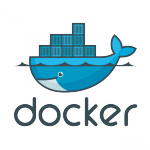A Ferrari, three blind men and DevOps

In a rapidly evolving digital world, businesses are moving at breakneck speeds and one upping each other to achieve the unicorn of customer delight. For a number of organizations, a large part of that equation boils down to accelerating the release of high quality software. A release every three months is now being replaced by a release every three days. The timelines are shrinking; the expectations are only getting higher. It is crucial now more than ever for all the moving parts to come together in unison and work cohesively towards achieving a sustainable competitive advantage.
Despite several reams of virtual space being dedicated to discussing the intrinsic nature of DevOps, its true identity still remains muddled amongst a slew of varied opinions. And based on their respective vantage points, each opinion carries with it some truth and yet remains vastly adrift from the heart of the matter.
What are the benefits of DevOps?

IT buzzwords change like the wind. From big data, to containers, to the Internet of things, there is no shortage of often-used phrases that organizations must quickly become accustomed to.
DevOps is the latest trend that can increase agility and improve performance in the IT department. However, confusion is still rife, with many businesses unsure what it is, and how to capitalize upon it.
App developers spend too much time debugging errors in production systems

According to a new study 43 percent of app developers spend between 10 and 25 percent of their time debugging application errors discovered in production, rather than developing new features.
The survey carried out by ClusterHQ found that a quarter of respondents report encountering bugs discovered in production one or more times per week.
DevOps can make apps more secure

Pretty much all IT operations professionals (99 percent) agree: adopting a DevOps culture can improve application security. This is according to a new report by Hewlett Packard Enterprise.
The report, titled Application Security and DevOps Report 2016, also emphasizes that just a fifth (20 percent) of respondents test their application’s security during development, and 17 percent are using no technologies whatsoever to protect their apps. The conclusion of the report is simple: there is a significant disconnect between perception and reality of secure DevOps.
Cloud sandboxing for DevOps: What you need to know

Sandboxes provide environments for developers and testers to reproduce even the most complex infrastructures, from data centers to public and hybrid clouds.
Sandboxes allow ITOps and dev/test teams to create personalized replicas of production environments with self-service, on-demand environments that can quickly allow even the most complex environments to be created, modeled, orchestrated and deployed -- from physical patch panels to distributed applications. This can rapidly speed up release cycles while drastically lowering cost and reducing risk.
DevOps is driving the move to cloud-first businesses

New research from cloud business management specialist ServiceNow indicates that enterprise cloud services have reached a tipping point, with 52 percent of respondents saying they would select cloud as the platform of choice for new business applications.
In addition 85 percent say they now are headed towards a cloud-first footing, with almost nine out of 10 saying they will complete the shift within two years.
What you need to know about DevOps

The term DevOps is being thrown around a lot in the IT industry at the moment, but what exactly does it mean and, more importantly, how can it help an enterprise?
As a combination of developer and operations, DevOps looks to bring these two different areas of digital business together to provide the perfect combination of innovation and user-focused processes during software development. Continuous deployment and continuous delivery are both important aspects of this and, when adopting DevOps, it is vitally important that businesses assess which one is right for them. It also looks towards the automation of delivering changes to infrastructure and software.
Most US IT practitioners earn $100k annual salaries

Automated software delivery specialist Puppet has released the result of its latest DevOps Salary Report which shows that most IT practitioners in the US earn a $100,000 annual salary.
It also finds that 43 percent of IT managers earn $150,000 or more, up from 26 percent last year. The report is based on data gathered from more than 4,600 respondents to the survey.
The benefits of a DevOps culture [Q&A]

Many IT teams are looking for a way out of the quagmire of delayed projects, questionable quality, and missed deliveries in which they often find themselves without writing blank cheques. The concept of DevOps has taken the IT world by storm, but has the day-to-day practice caught up?
Brian Dawson, DevOps expert, CloudBees discusses how this new approach can help these IT projects can progress and transform businesses.
DevOps can help bridge the gap between software companies

High-performing organizations are widening the gap against low-performing ones, a new report on DevOps suggests. Entitled 2016 State of DevOps Report, it was released by Puppet and DORA (DevOps Research and Assessment), and is considered one of the largest, most comprehensive and longest-running studies on the topic of DevOps.
High-performers deploy 200 times more frequently and have 2,555 times faster lead times. They recover 24 times faster from failed changes and have three times lower change fail rates. The report also said high-performers spend 22 percent less time on unplanned work and rework, and are able to spend 29 percent more time on new work.
Strong DevOps performance pays off for businesses
The container market is about more than just Docker

When containers are mentioned, Docker is probably the system that comes to mind. But in fact the container market is much bigger than that with over 100 products that use containers to amplify the benefits of agile development for their users.
Of those, 20 come from public companies and over 70 from private companies, which collectively represent $1.7 billion in venture capital funding. 88 percent of enterprises say they're shifting to a DevOps strategy, and containers are changing the nature of DevOps and transforming infrastructure.
7 things to consider before adopting Docker

Docker has been hailed as a cycle-shrinking, cost-reducing panacea by DevOps, though ROI is far from proven with this nascent technology. So do companies have more than just hype or guesswork to go on?
Whilst businesses continue to embrace containerization, uncertainties, and misconceptions about Docker linger, not least of which is that it always reduces costs and saves time. Here are the pros and cons of Docker, and what companies need to think more about before casting their vote of confidence and investing in this space.
DevOps and Docker adoption take off in the enterprise

Back in February RightScale released the results of its latest State of the Cloud Report. This year it asked some additional questions surrounding the use of DevOps tools including Docker.
Today it has launched an additional DevOps Trends report offering a look at these extra findings. These show that DevOps adoption increased from 66 percent in 2015 to 74 percent in 2016 and that Docker adoption has more than doubled in the same period.
IT departments need to adapt faster to change

The fast-changing IT environment of today is forcing companies to reconsider their approach to IT, as they believe that can help them stand out in the crowd of their competitors.
However, the process is quite challenging. Those are the general conclusions of a new research released by managed services provider Claranet.
Recent Headlines
Most Commented Stories
BetaNews, your source for breaking tech news, reviews, and in-depth reporting since 1998.
© 1998-2025 BetaNews, Inc. All Rights Reserved. About Us - Privacy Policy - Cookie Policy - Sitemap.